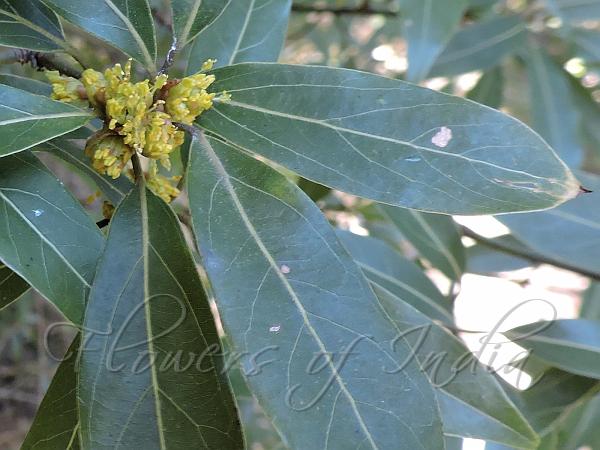|
| Pale Litsea |
|

|

| File size | 452578 |
| Original date | 1/1/14 12:00 AM |
| Resolution | 1600 x 1200 |
| Flash | Flash did not fire, auto |
| Focal length | 4.3mm |
| Exposure time | 1/30s |
| Aperture | 3.0 |
| Focus Distance | |
| Metering Mode | Multi-segment |
| Camera make | NIKON |
| Camera model | COOLPIX P530 |
| Sensor type |
|
|
|
|
Photo: |
Botanical name: Neolitsea pallens Family: Lauraceae (Laurel family)
Synonyms: Litsea consimilis, Malapoenna pallens, Tetranthera pallens
Synonyms: Litsea consimilis, Malapoenna pallens, Tetranthera pallens
Pale Litsea is a small tree, 5-15 m tall, with young
branchlets and leaf-stalks yellowish brown velvet-hairy and becoming
hairless. Leaves are alternate or 3-5 clustered toward tip of
branchlet; leaf-stalk 6-15 mm; leaf blade elliptic or
elliptic-lanceshaped, 5-8 x 2-3 cm, hairless on both surfaces when old,
triplinerved, lateral veins 4 or 5 pairs, base wedge-shaped or broadly
wedge-shaped to round, margin often wavy in a dried state, tip tapering
to with a tail. Flowers are bborne in umbels in leaf-axils on an up to
1 mm long, thick, bracteate flower-cluster-stalk. Bracts are
ovate-elliptic, 4-5 mm, minutely laxly silky. Male flowers have
flower-stalks 2-2.5 mm, hairy; tepals oblong, hairless, 2 mm; stamens 4
mm, strongly protruding; basal glands small, attached to the basal half
of the filament. Female flowers have tepals oblong, 2 mm; style 1.5 mm,
stigma minute, peltate. Fruits are spherical, about 8 mm in diameter,
hairless, apiculate at tip, seated on flat discoid perianth tube;
fruiting flower-stalk slender, 1.0-1.2 cm, yellowish brown
velvet-hairy. Pale Litsea is found in evergreen broad-leaved forests in
the Himalayas, at altitudes of 2000-2400 m, in Pakistan, Nepal, to NE
India and China. Flowering: March-May.
| Identification credit: Anil Thakur, Nidhan Singh, Tapas Chakrabarty | Photographed in Shimla, Himachal Pradesh & Mussoorie, Uttrakhand. |
• Is this flower misidentified? If yes,